One of the most common tree plants in the world is hibiscus or Chinese rose. Caring for a Chinese rose at home is relatively simple, and it is sometimes said that it is enough to water it. This is not entirely true, because she still exposes some requirements for light, top dressing, crown formation and wintering to her masters, but in general, she is incredibly tenacious.
Material Content:
Chinese rose: home care
The plant can endure prolonged shading, being in the back of the room, lack of fertilizing for many years, although in such extreme conditions it is not always possible to wait for it to bloom. But her flowers, resembling a red or white rose, are unusually beautiful. Often, hibiscus is used for decoration of offices, public places, corridors in various institutions and organizations.
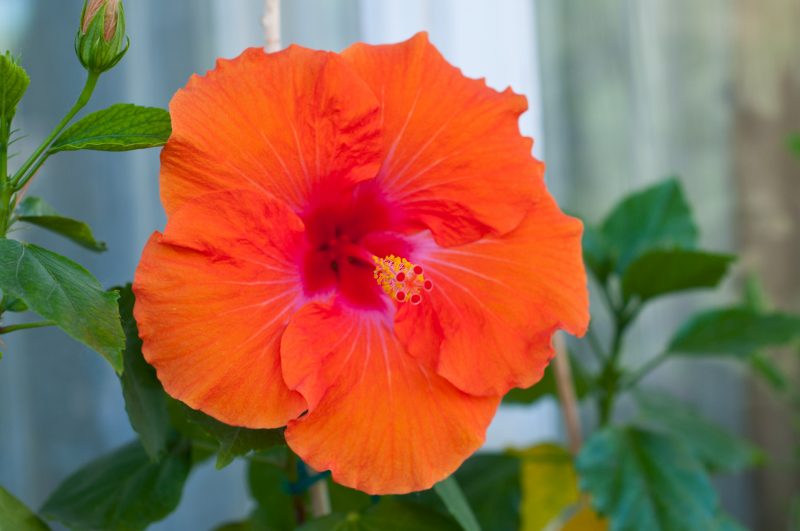
The Chinese rose, in spite of its name, is not related to the pink family and belongs to the malvaceous family. In the wild, hibiscus grows in the subtropics of Africa, Asia, North America. Some species are found even in the forests of Transcaucasia, Crimea and the Far East.
How to tame this wonderful creation of nature? How to please a Chinese rose and make it bloom? What difficulties can a flower grower face when growing her at home? All this and much more will be covered in this review.
Temperature features, lighting, humidity
Hibiscus care consists of timely moderate watering, top dressing and crown formation. Any grower can handle this.

- Indoor Chinese rose prefers a temperature of 20-22 degrees in the warm season and 13-16 degrees in winter. If in the summer it is not difficult to satisfy these requests of a green pet, then things can be different with wintering. Salvation of indoor gardeners is a warm balcony. A pot of roses is brought out in early December and kept at least until mid-January, and preferably until the end of February.
- If cold wintering is not possible, hibiscus should be placed on a light windowsill, but away from heating batteries. It is strongly recommended to spray it every day, since evaporating moisture cools the surface of the leaves.
- If we do not talk about the extreme conditions of cultivation, then hibiscus should provide good lighting at any time of the year. He is not afraid of direct sunlight, so you can put it on any windowsill, unless, if possible, avoiding the northern windows. If in the midst of a hot summer afternoon a slight wilting of leaves is observed, then the tree can be shadowed with mesh material.
- He loves the Chinese rose high humidity, although in the offices forced to put up with dry air. She responds positively to spraying, but even better is to sow moss on the surface of the soil, sold in stores for gardeners. An alternative is the numerous containers with water around the plant. In general, the higher the ambient temperature, the more humid the air requires hibiscus.
Soil requirements
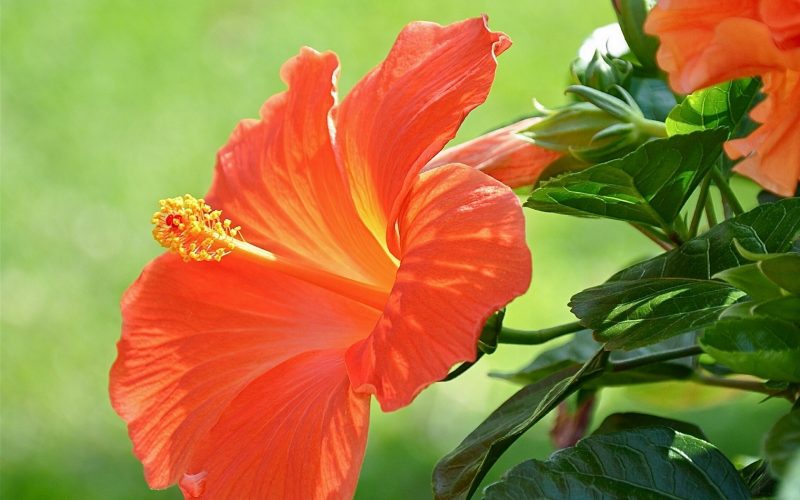
The Chinese rose is unpretentious, including to soils. If it is possible, then it is better to use soil consisting of sod, leaf and humus soil, taken in equal proportions. The soil should always remain light, so you can add a small amount of coarse sand or vermiculite. On hot days, when a crust forms on the surface of the substrate after watering, loosening is required.
Watering and feeding
Hibiscus is able to survive a short drying without serious losses. But it is better not to bring it to this, but to water it sparingly, making sure that water easily passes through the substrate, completely moistens the earthen lump and barely exits through the drainage hole.

To receive long-awaited flowers, a Chinese rose every 2-3 months can be fed with complex mineral fertilizers, among which are preferred those that contain more phosphorus and relatively little nitrogen. When overfeeding, only shoots will last grow.
Trimming and shaping a bush
Hibiscus can and should be formed using clipping. Pruning of roses is carried out at the end of the winter period and during the year after the completion of flowering waves. In February, they are shortened by 3-5 cm. All shoots, including young ones. During the growth period, each branch that has successfully carried out a flower is cut. Soon, it begins to branch, which will have a beneficial effect on flowering next year.
It is interesting: powdery mildew on roses

Fatty shoots are completely cut off, growing vertically along the trunk - tops. Branches growing inside the crown are also removed.
Thus, the formation of a bush is reduced only to shortening the shoots, only this must be done in a timely manner.
Plant transplant
Plants purchased in stores always need a transplant and some simple resuscitation measures. The fact is that on an industrial scale, indoor crops are grown on fertilizers and hormones. When their supply runs low, plants often die. Therefore, a purchased tree, especially grown in Holland, is taken out of the pot, brushed off the soil (without fanaticism) and transplanted into light, breathable soil. After that, the hibiscus is watered and covered with a plastic bag or mini-greenhouse.
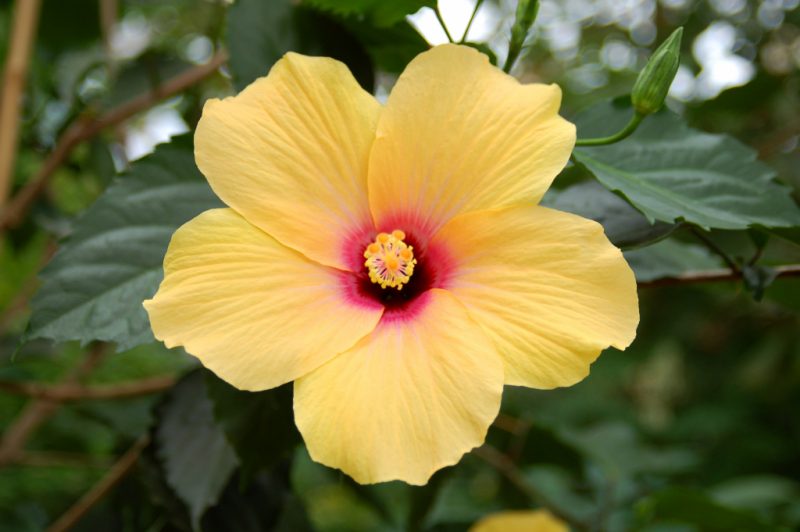
In this form, it lasts from 1 to 3 weeks depending on its condition: with a satisfactory appearance, the shelter can begin to be removed in stages and vice versa.
To get rid of polyethylene, several holes are made in it. In the following days, they expand.After 3-4 days, the film can be completely removed.
Hibiscus (Chinese rose), grows pretty fast. This process can be slowed down by keeping its root system in a tight pot.
Do not transplant this tree until the roots tightly braid the entire earthen lump and begin to peep through the drainage hole. To a lesser extent, this applies to very young plants that can be handled annually.
Flowering chinese rose
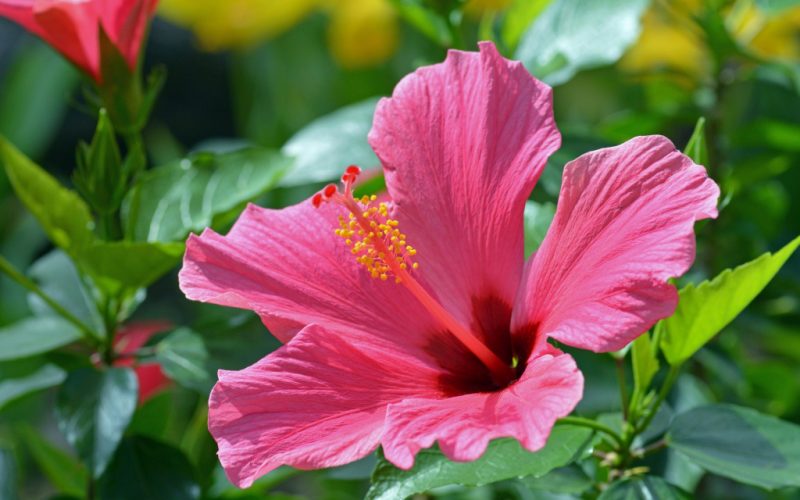
For the first time a year, this wonderful tree blooms in March and April. The first buds begin to grow soon after the start of the growing season. In the absence of proper attention to the plant, hibiscus gives single flowers throughout the year, and with good care, its flowering is plentiful and long. An additional factor that increases the chances of flower formation is the application of phosphorus fertilizers in the fall shortly before the Chinese rose is put into a state of winter sleep.
Breeding
The easiest way to propagate hibiscus is by cuttings that take root well even just in the water. For this purpose, an 8-15 cm long shoot is cut. The lower and largest leaves are removed from it. The cuttings are placed either in water or in moist coarse sand or light sandy soil. The container is covered with a mini-greenhouse or polyethylene.
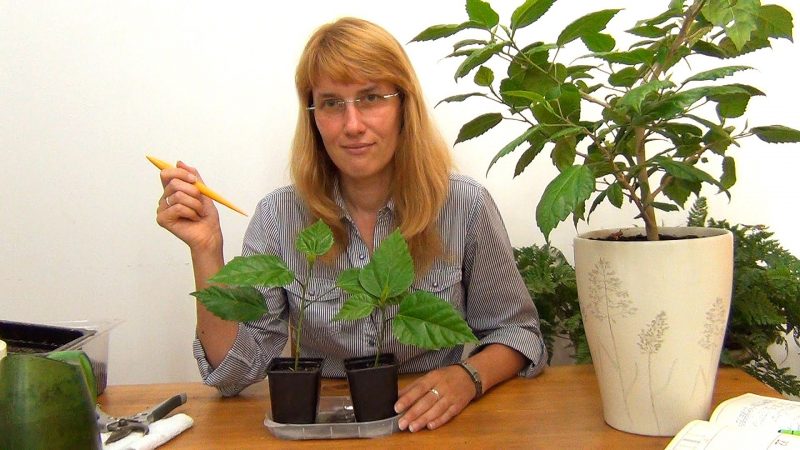
Roots appear after 25-30 days. After another 1-2 weeks, a young rose can be transplanted to a permanent place of residence in a pot.
Pests and diseases of hibiscus - how to treat?
In practice, hibiscus is infected with two malicious insects: scabies and spider mites. The scabbard can easily be destroyed with the Aktara preparation. To do this, the leaves, stems and trunks are treated with a solution, after which the solution, diluted in accordance with the instructions, is poured into the soil. The roots absorb substances poisonous to the scabbard, after which it dies.
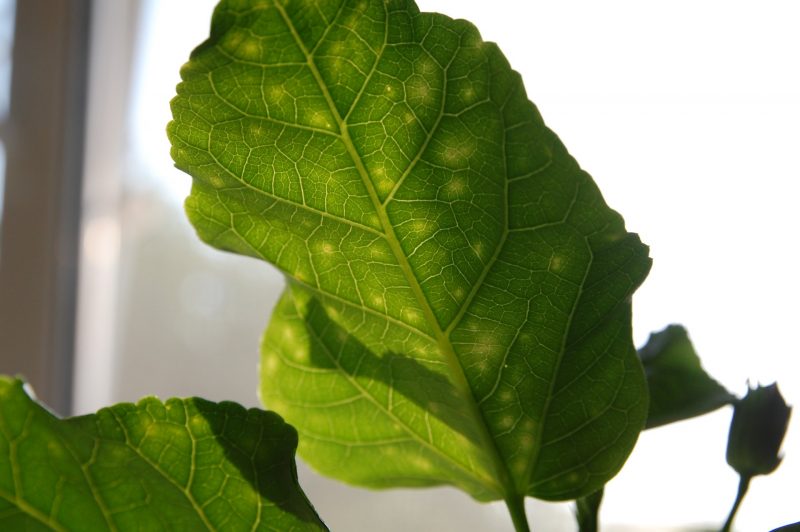
The spider mite is a more insidious enemy. Usually they notice him only when the plant has already suffered enough from its activity. Most often there are red ticks that look like small red dots covering the surface of the leaves.
First, you can try to get rid of it with the help of Fitoverm.
If after three treatments with an interval of a week the tick still remains, then you will have to resort to more toxic drugs:
- Sunmight;
- Omaytu;
- Oberon;
- Neoron.
Their vapors cannot be breathed for a long time, therefore, after processing the roses, leave them indoors, where no one will need to enter for 10-12 hours.
Why does the Chinese rose turn yellow, fall, dry, wither, not bloom?
Sometimes hibiscus is still capricious. Some gardeners give him too much attention and “love”, while others, on the contrary, do not look after him in any way. What are the most common problems when growing Chinese roses?
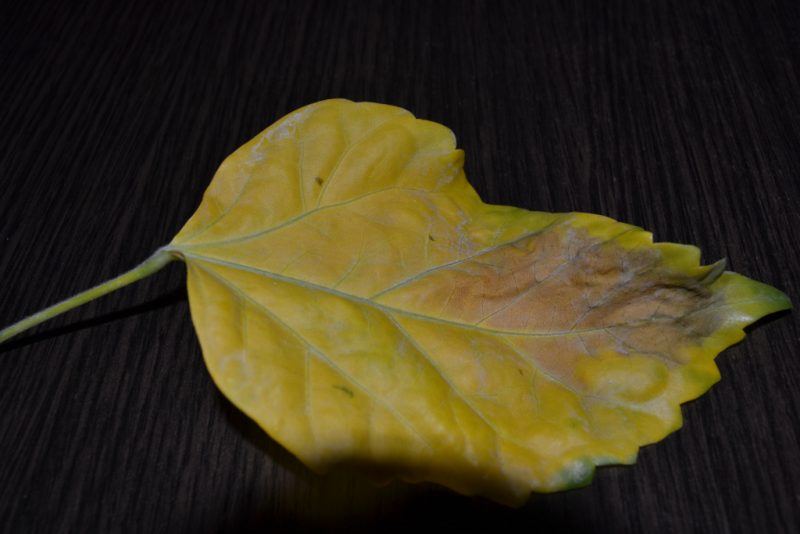
- If the buds are successfully formed, but soon turn yellow and fall, the reason may be hidden in insufficient watering, lack of nutrients in the soil or low air temperature.
- When the lower leaves fall, and the new ones turn yellow, barely having time to appear, one can suspect an excess of calcium or chlorine in the soil or a lack of iron and nitrogen.
- Hibiscus trees, which are actively growing green mass, but stubbornly refusing to form buds, are probably overfed with nitrogen.
- If the plant looks wilted, and the roots are dry, even despite sufficient watering, you should check if the pot is in the zone of cold drafts. Such symptoms are characteristic of hypothermia of the root system.
- In winter, with a warm wintering, the leaves may dry and fall off. The issue is solved either by moving the hibiscus in cool, or by intensifying its spraying. It is also worth making sure that the heating batteries are at a sufficient distance from the tree.
Why does not the Chinese rose bloom even with seemingly careful care? Most often, hibiscus does not give out buds due to improper maintenance in the cold season.
- The fact is that flower buds on a tree are laid just in the winter, and for their successful formation, coolness is needed in the region of 13-15 degrees. A small number of flower buds, of course, can appear during a warm wintering, but in this case only single flowers can be expected.
- Other reasons for the lack of buds in the Chinese rose are a lack of nutrients in the soil, an excess of nitrogen, poor aeration of the earth coma, poor lighting, or, conversely, an excess of direct sunlight.
As you can see, caring for hibiscus is very simple, and the results of work can attract the attention of even the most callous person, far from the topic of crop production. The Chinese rose pleases millions of flower growers around the world. Join and you to admirers of this beautiful houseplant!












